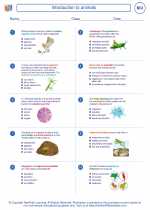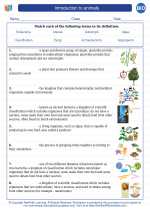Reticular Tissue
Reticular tissue is a type of connective tissue that is composed of reticular fibers, fibroblasts, and white blood cells. It forms the framework of lymphoid organs such as the spleen, lymph nodes, and bone marrow. Reticular tissue provides structural support and helps in the filtration of substances in these organs.
Structure of Reticular Tissue
Reticular tissue is composed of reticular fibers, which are thin, branching fibers made of collagen. These fibers form a network or mesh-like structure that supports the cells and other components of the tissue. The fibroblasts are the cells responsible for producing and maintaining the reticular fibers. In addition to fibroblasts, reticular tissue also contains white blood cells, particularly lymphocytes, which are important for immune function.
Function of Reticular Tissue
The main functions of reticular tissue include providing structural support for the organs it is found in, facilitating the movement of immune cells, and aiding in the filtration of substances. The mesh-like structure of reticular tissue allows for the passage of cells and other materials, making it an important component of the immune system.
Study Guide for Reticular Tissue
When studying reticular tissue, it's important to focus on the following key points:
- Structure: Understand the composition of reticular tissue, including the presence of reticular fibers, fibroblasts, and white blood cells.
- Function: Learn about the role of reticular tissue in providing structural support, facilitating immune cell movement, and aiding in filtration.
- Location: Identify the organs and tissues where reticular tissue is found, such as the spleen, lymph nodes, and bone marrow.
- Importance: Recognize the significance of reticular tissue in the immune system and overall organ function.
When studying reticular tissue, it can be helpful to use diagrams or visual aids to understand the network-like structure of reticular fibers and their relationship to the cells within the tissue.
Understanding the role of reticular tissue in supporting immune function and organ structure is essential for comprehending its importance in the body.
Remember to review the functions of fibroblasts and white blood cells within reticular tissue, as they play crucial roles in maintaining the tissue's structure and supporting immune responses.
With a solid understanding of the structure and function of reticular tissue, you'll be well-equipped to grasp its significance in the context of connective tissue and immune system function.
Good luck with your studies!
.◂Biology Worksheets and Study Guides High School. Introduction to animals

 Worksheet/Answer key
Worksheet/Answer key
 Worksheet/Answer key
Worksheet/Answer key
 Worksheet/Answer key
Worksheet/Answer key
 Vocabulary/Answer key
Vocabulary/Answer key
 Vocabulary/Answer key
Vocabulary/Answer key
 Vocabulary/Answer key
Vocabulary/Answer key
